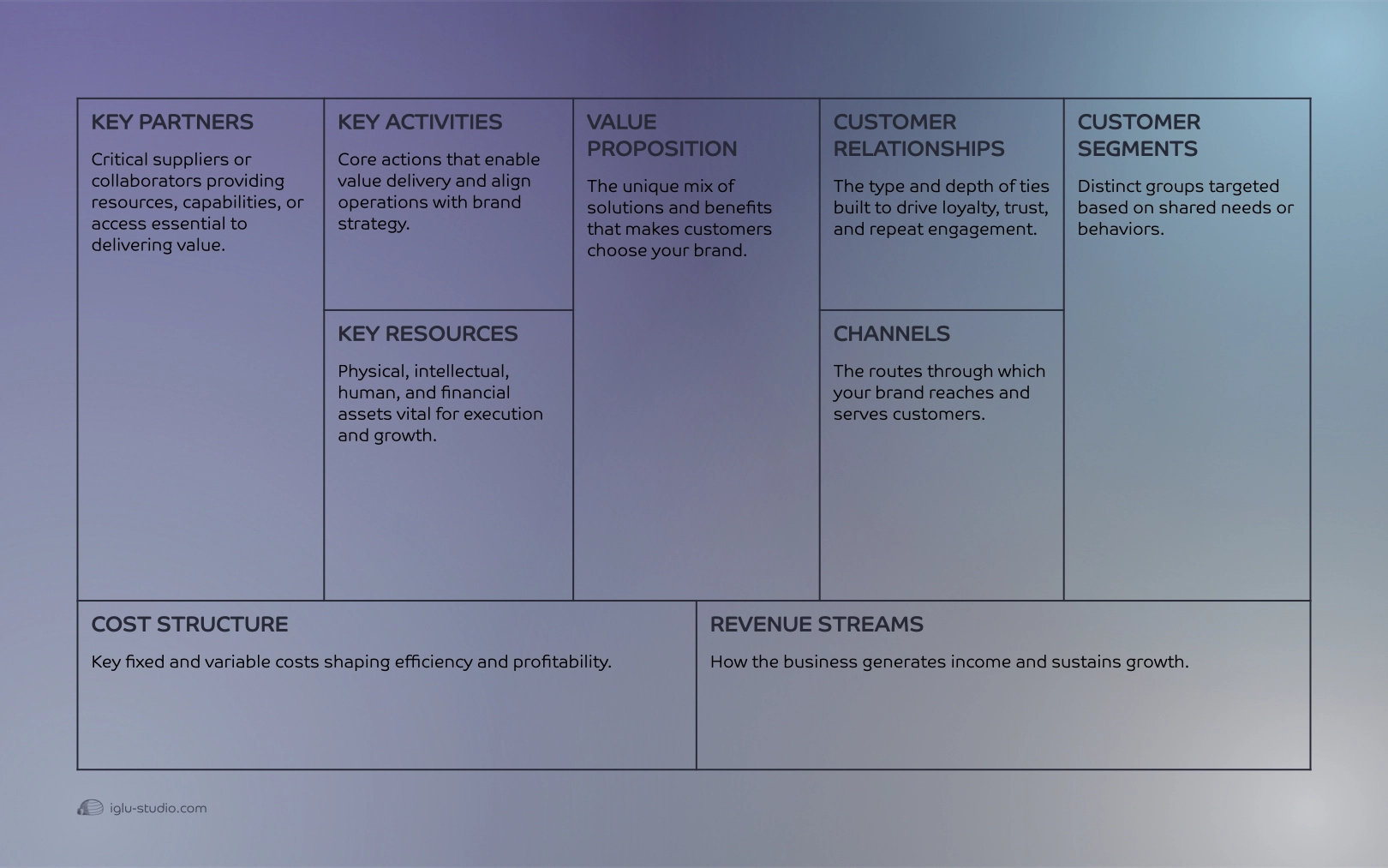The Architecture of Business: A perspective on the Business Model Canvas framework
In 2010, Business Model Generation by Alexander Osterwalder and Yves Pigneur was published as one of the most significant strategic works in the field of business design. Created in collaboration with over 470 experts from 45 countries, the book presented a simplified visual model of business logic and established a common language for entrepreneurs, managers, organizational designers and strategists.
Its influence on the innovation and entrepreneurship ecosystem has been so substantial that today the Business Model Canvas is considered a global standard for designing and reviewing business models. The strength of the canvas lies in condensing the complexity of an organization into a single page while illustrating the interconnections between its essential components. It is a tool that serves both small start‑ups and large international corporations in shaping their value creation pathways.
A business model serves as a conceptual map that enables organizations to answer a central question: How do we create value for customers and how do we capture value from this process. This map consists of nine interconnected building blocks, each with its own function, relationships and strategic impact on the overall direction of the organization.

Key Partners
Every business model involves a network of external collaborators that provide complementary resources or capabilities. These partners may help with securing supplies, offering technology, handling distribution or developing markets. Identifying key partners aims to reduce risk, improve efficiency and open access to opportunities that cannot be reached alone.
Key Activities
This section defines the most important actions that an organization must perform to deliver its value proposition. These may include product development, marketing, after‑sales service and quality management. Each activity should be directly aligned with the brand promise and customer expectations.
Key Resources
Strategic assets such as physical, intellectual, human and financial resources form the foundation for executing the business model. These resources must support operational sustainability and contribute to building competitive advantage.
Value Proposition
At the center of the business model is a clear promise to the customer. This promise is a unique blend of products or services that addresses a specific need in a way that is both superior and distinctive. The value proposition must be transparent, relevant and supported by evidence.
Customer Relationships
This component shows how the organization creates, develops and maintains interactions with each customer segment. The approaches may include direct personal engagement or automated systems, but the objective is always to nurture trust, loyalty and long‑term connections.
Channels
Channels are the routes through which the value proposition reaches customers. They may involve physical locations, online platforms, distribution networks or social media. The aim is to create a seamless and efficient customer experience.
Customer Segments
Every business serves specific customer groups that share similar characteristics, needs or behaviors. Accurate definition of these segments makes it possible to allocate resources effectively and design targeted strategies.
Cost Structure
This section examines the most significant costs required to operate the business model. Understanding the proportion of fixed and variable costs and how they relate to the scale of operations is vital for financial health and competitiveness.
Revenue Streams
This part explains how the value created is transformed into revenue. It may involve direct sales, subscription services, differentiated pricing or service fees. The goal is to ensure alignment with long‑term sustainability and growth.
A business model is more than a visual tool for generating or organizing ideas. It is an analytical framework that connects the vision of the organization, the needs of the market and the paths to sustainable revenue. This framework creates a shared understanding among stakeholders and supports strategic decision‑making based on a clear and complete map.
At Iglu Studio, we place strong emphasis on the Business Model Canvas when developing brand strategy and brand design. This ensures that brand identity is formed not only through aesthetics or messaging but also on the operational and economic logic of the business. The result is a customer experience that fully aligns with the realities of the organization and reinforces its competitive advantage.
The Source Book Metadata
• Title: Business Model Generation: A Handbook for Visionaries, Game Changers, and Challengers
• Authors: Alexander Osterwalder and Yves Pigneur
• Year of Publication: 2010
• Publisher: John Wiley & Sons, Inc.
• Place of Publication: Hoboken, New Jersey, USA
• ISBN (ISBN-13): 978-0-470-87641-1
• Total Pages: 288 pages


